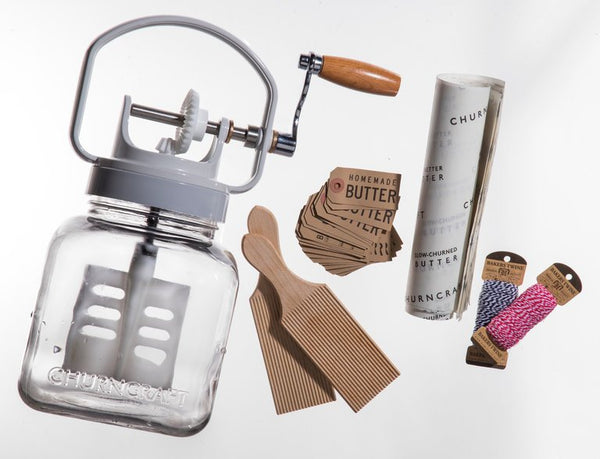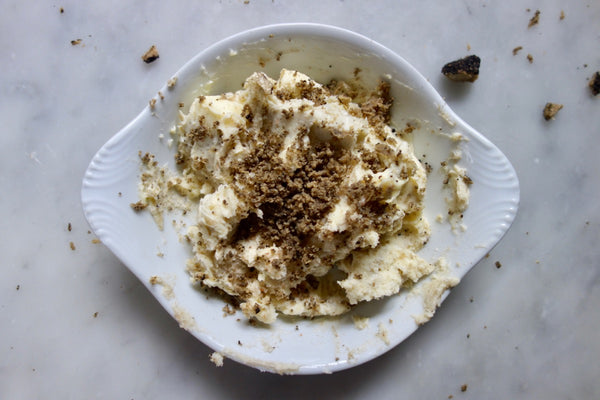Your Cart is Empty
The tradition of butter making has been around for thousands of years. From Europe to Africa to South America to Asia, butter has been a staple of many cultures around the world.
At the beginning, butter making was a rudimentary process. People would fill an animal skin sack with goat’s milk, since at this time, cows had not yet been domesticated in most of the world. They would attach the sack to a wooden tripod with rope and rock it back and forth until it eventually formed butter. Nomadic peoples would simply hang the sack off the side of a pack animal and butter would form just through the process of walking.
In time, as with all things, butter making equipment was greatly improved. There were essentially three types of butter churns: the dash churn, the barrel churn, and the paddle churn. The dash churn was developed first. It is typically comprised of a dasher (pole) inserted into the lid of a barrel. The dasher is moved in a vertical motion, agitating the cream in the barrel.
From the Middle Ages until the Industrial Revolution, dash churns were the most common device used to make butter. However, the dash churn was eventually replaced by the barrel churn. A barrel was mounted on wooden legs and had a crank handle that would rotate the entire barrel. Thereafter, the paddle churn, which had a crank handle operating a rotating paddle inside the churn, was popularized for it’s more efficient and less laborious process.
Butter making was an essential chore for every household. Women would spend hours churning and storing butter for their families, and would often sell to their neighbors. The art of butter making originated in the home, however, it was not long until butter making became an industry in it’s own right. As populations swelled and communities expanded, the need for butter and other dairy products in urban areas rose.
During the course of the 18th and 19th centuries, butter was commercialized and widely available for purchase in most countries. Post Industrial Revolution, the dairy industry in Europe began to boom. Ireland was a primary exporter of butter, selling mostly to England.
During the 1800s, New York state was the capital of the dairy industry in our country. The first commercial dairy farm in America was founded in Goshen, NY in the 1830s. “Goshen Butter” was a thriving industry, until it declined in the mid 1800s due to the development of railroads. Though the butter industry, and the consumption of butter, has been on a roller coaster in the United States, it is still one of our nation’s most beloved products.






